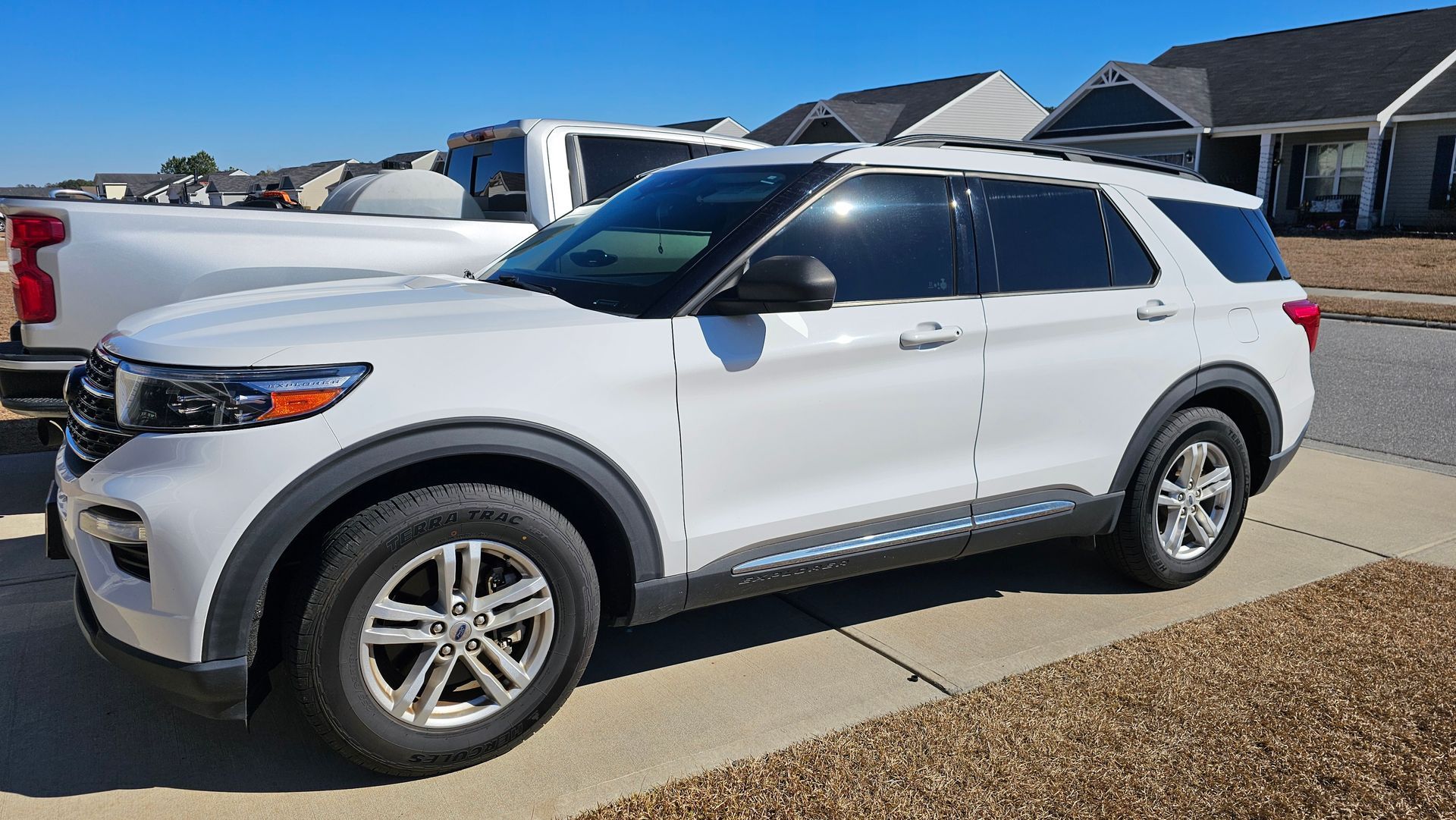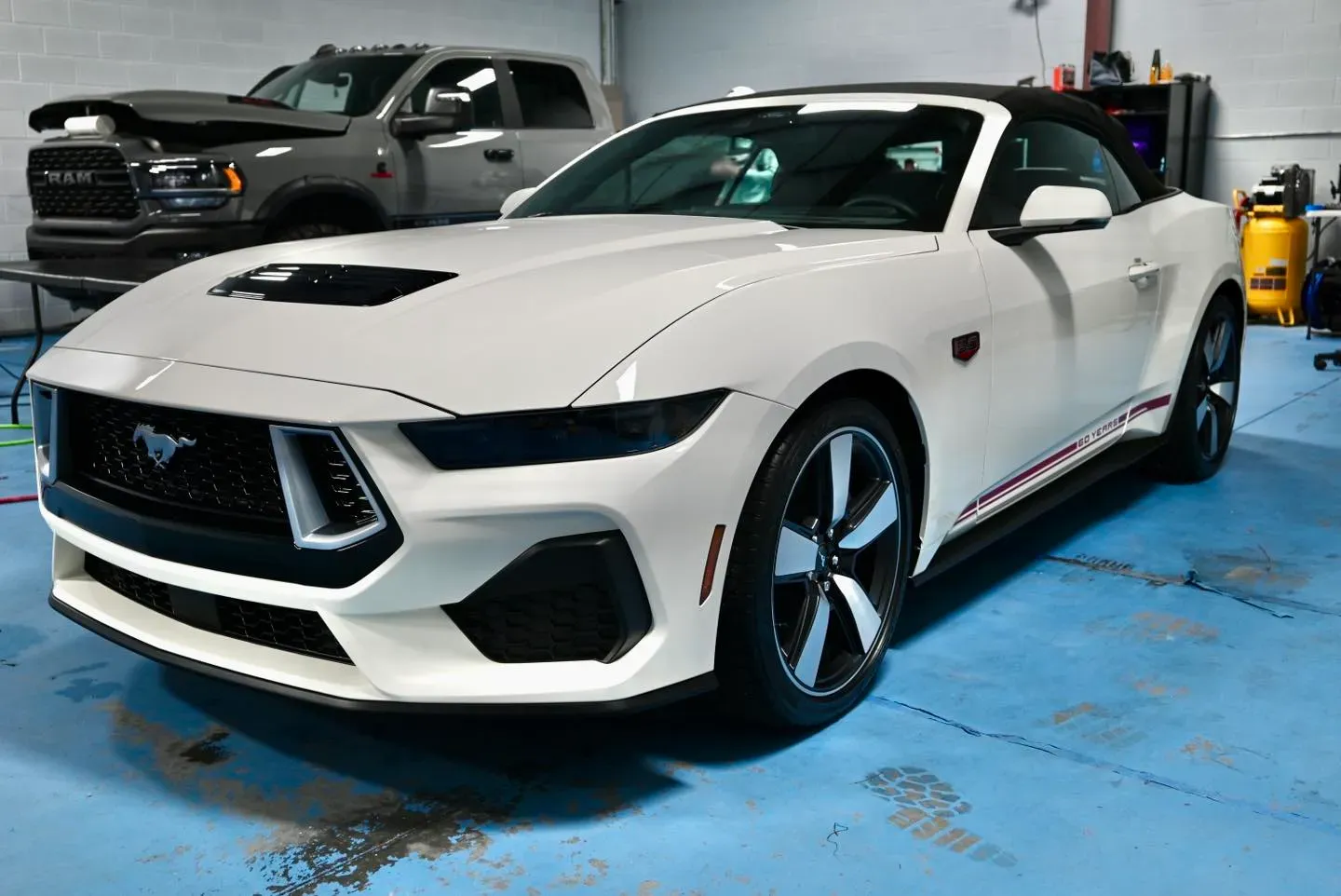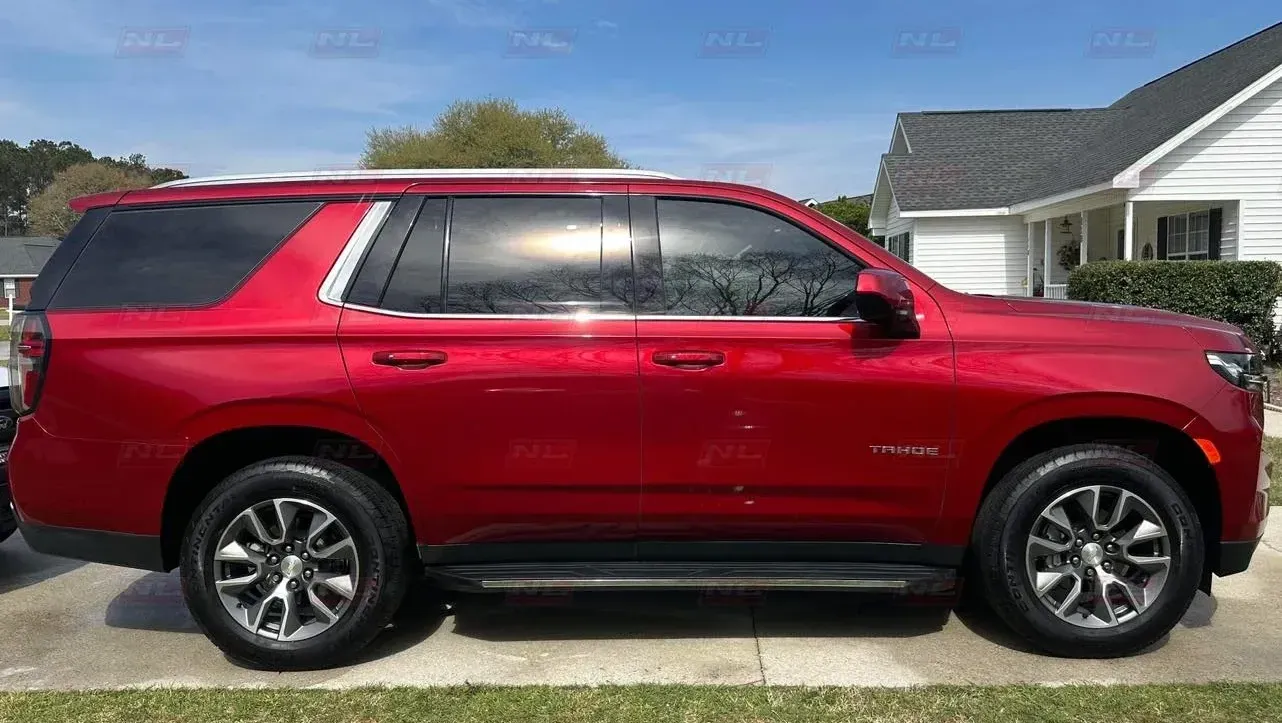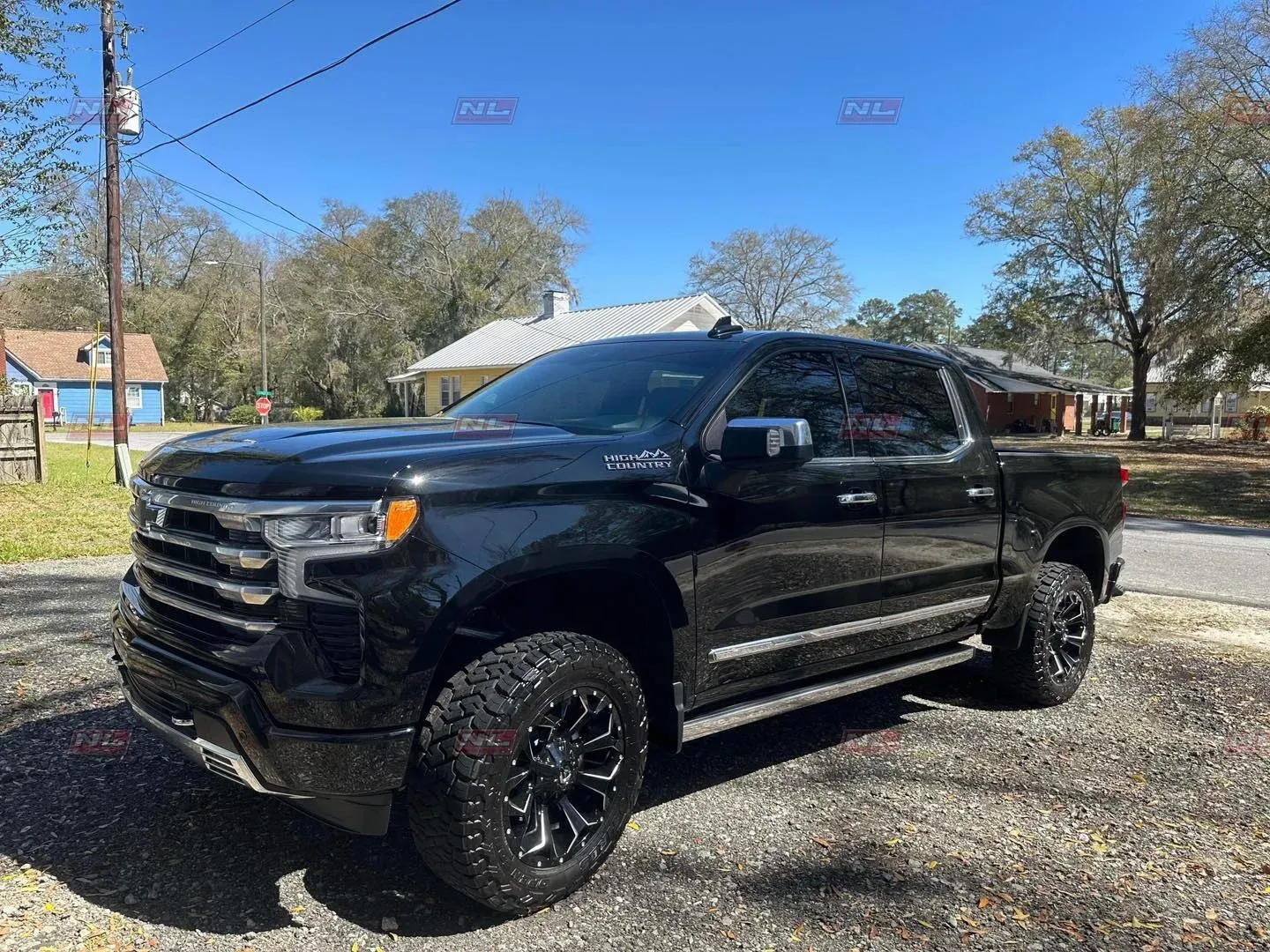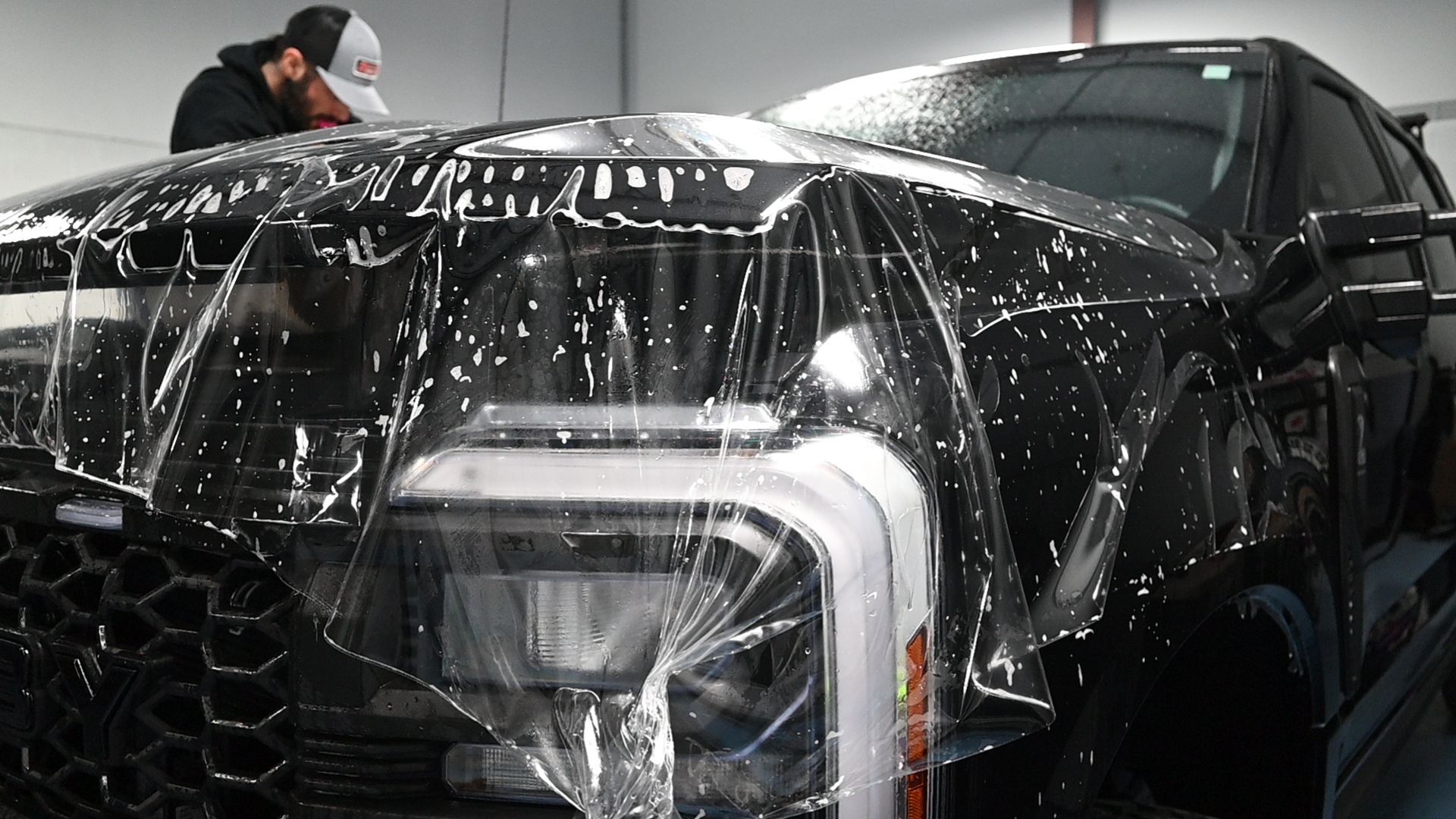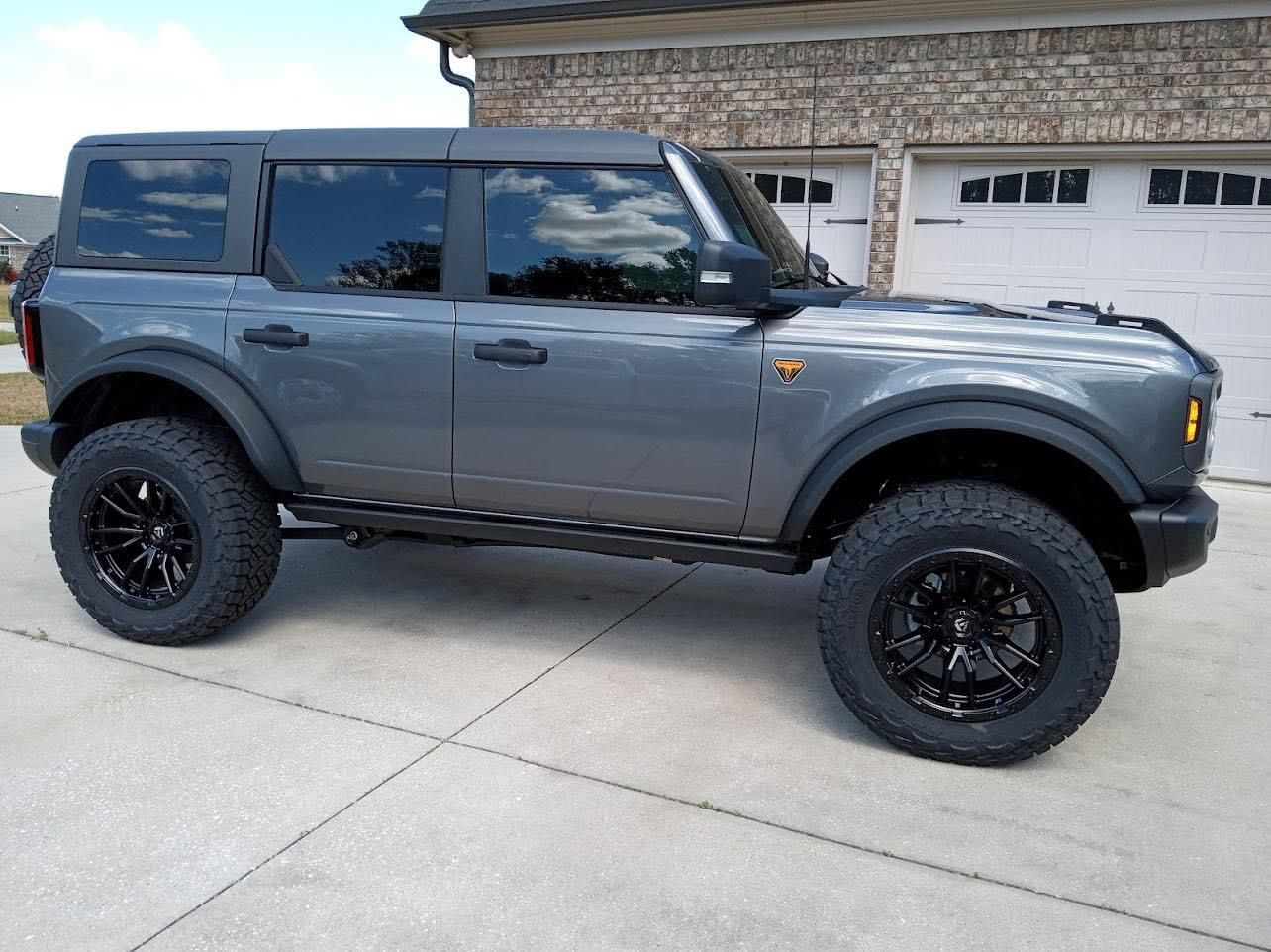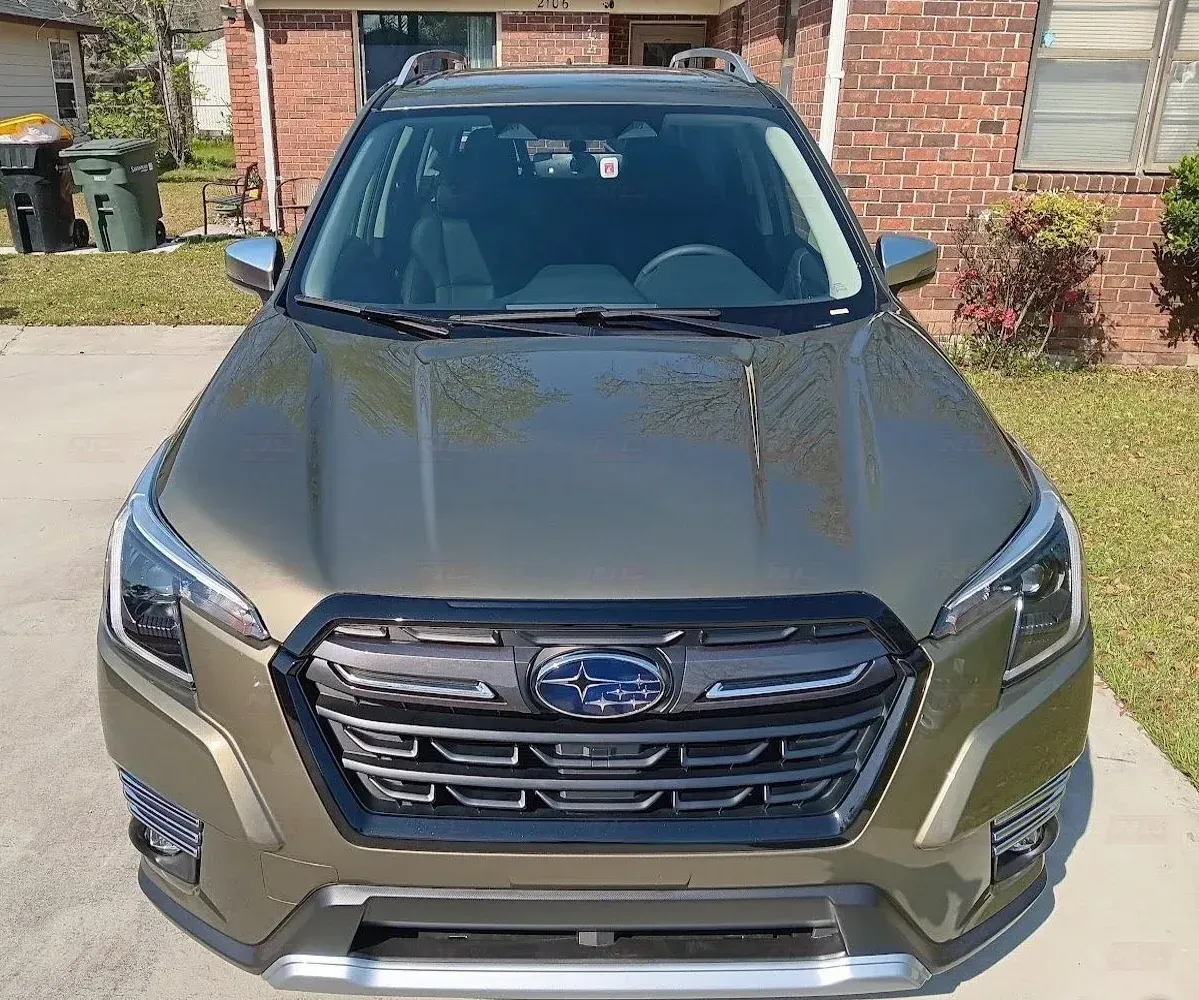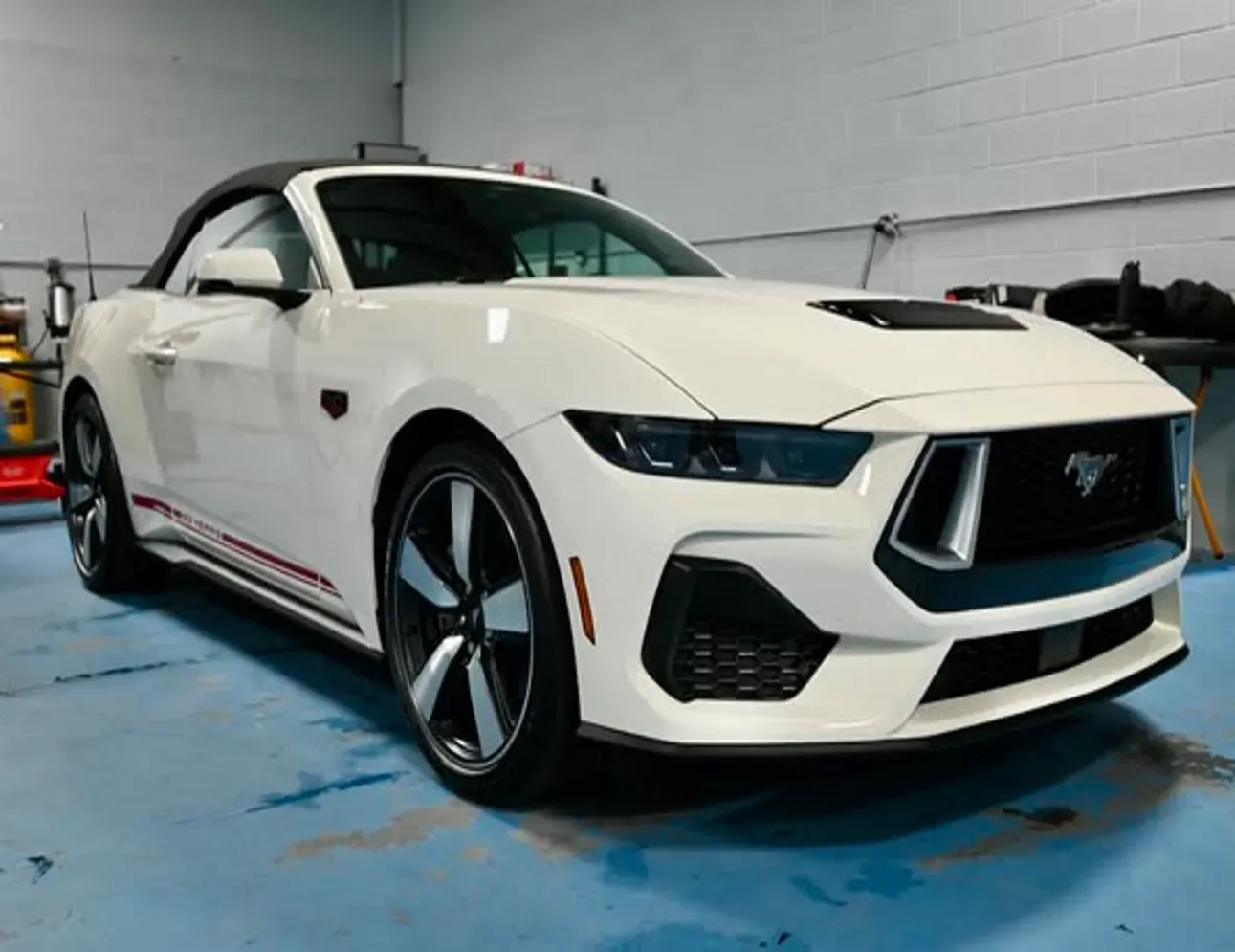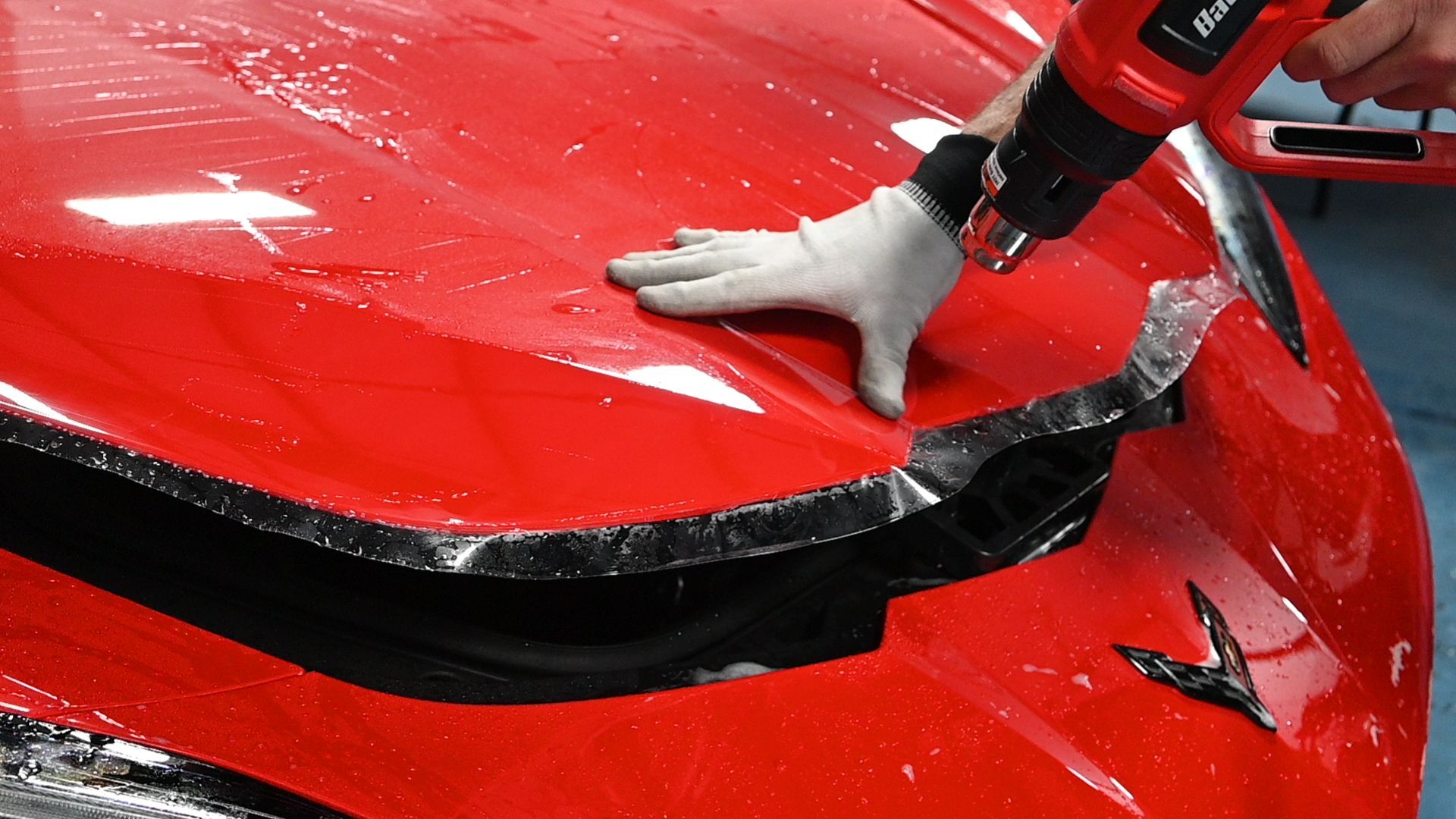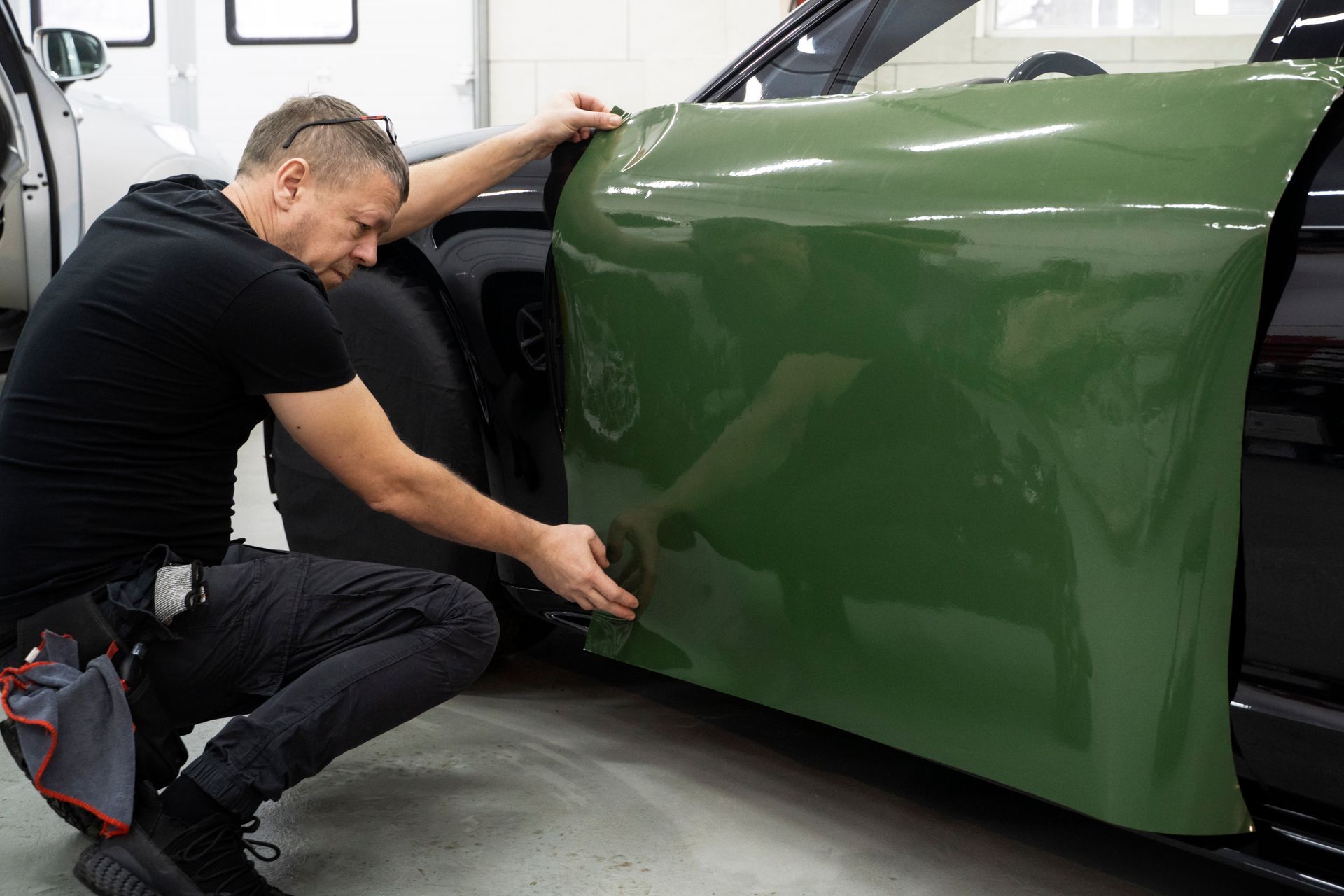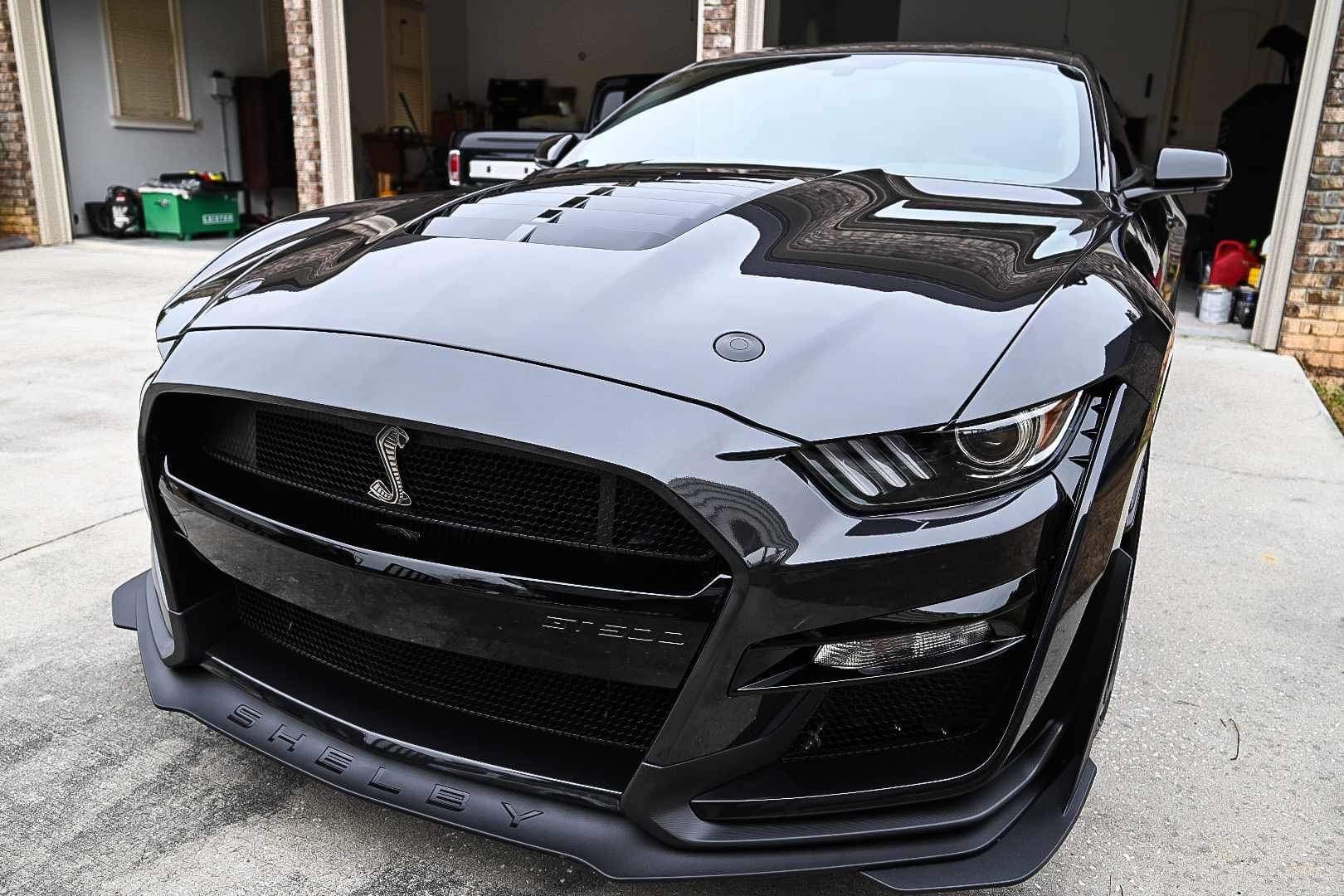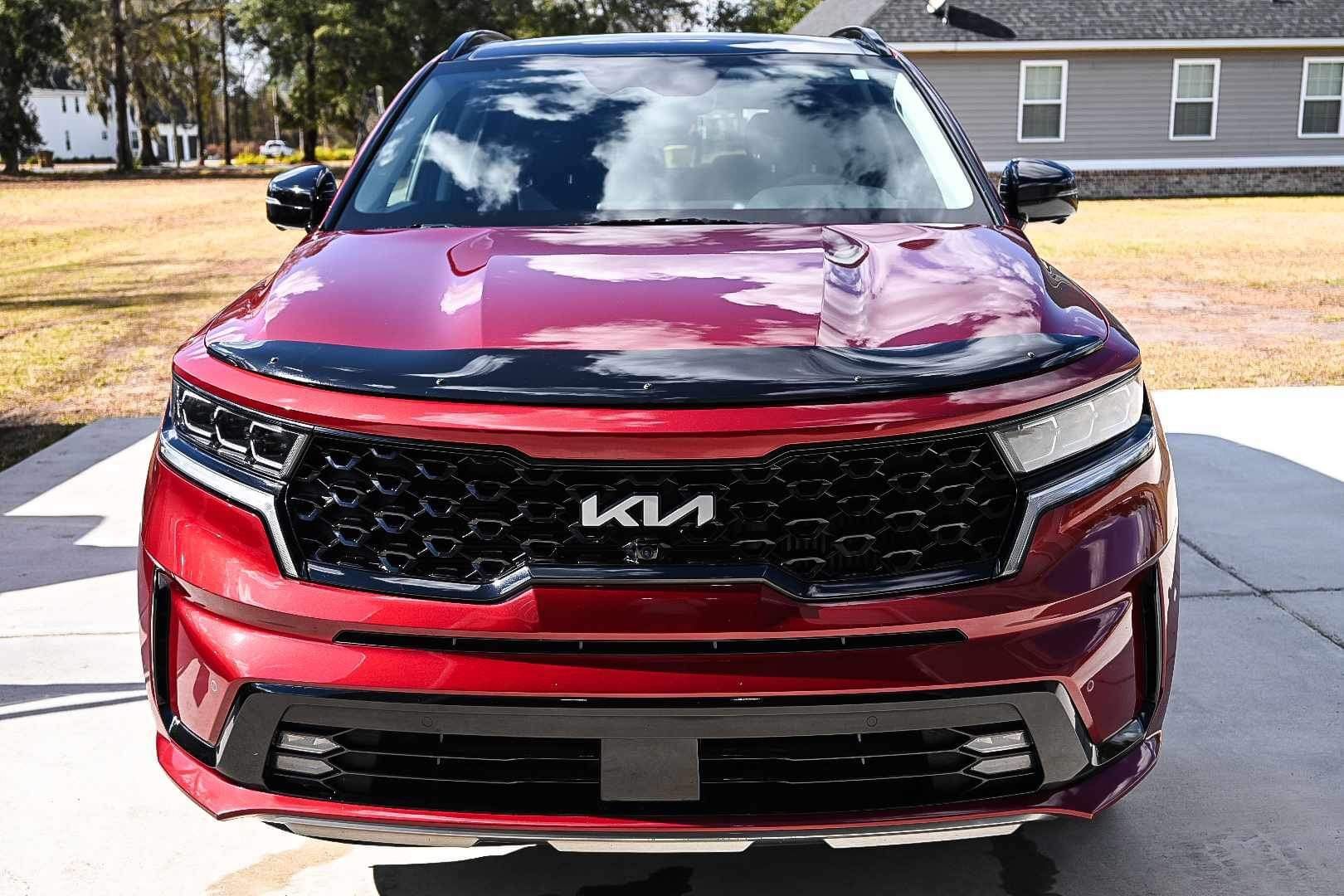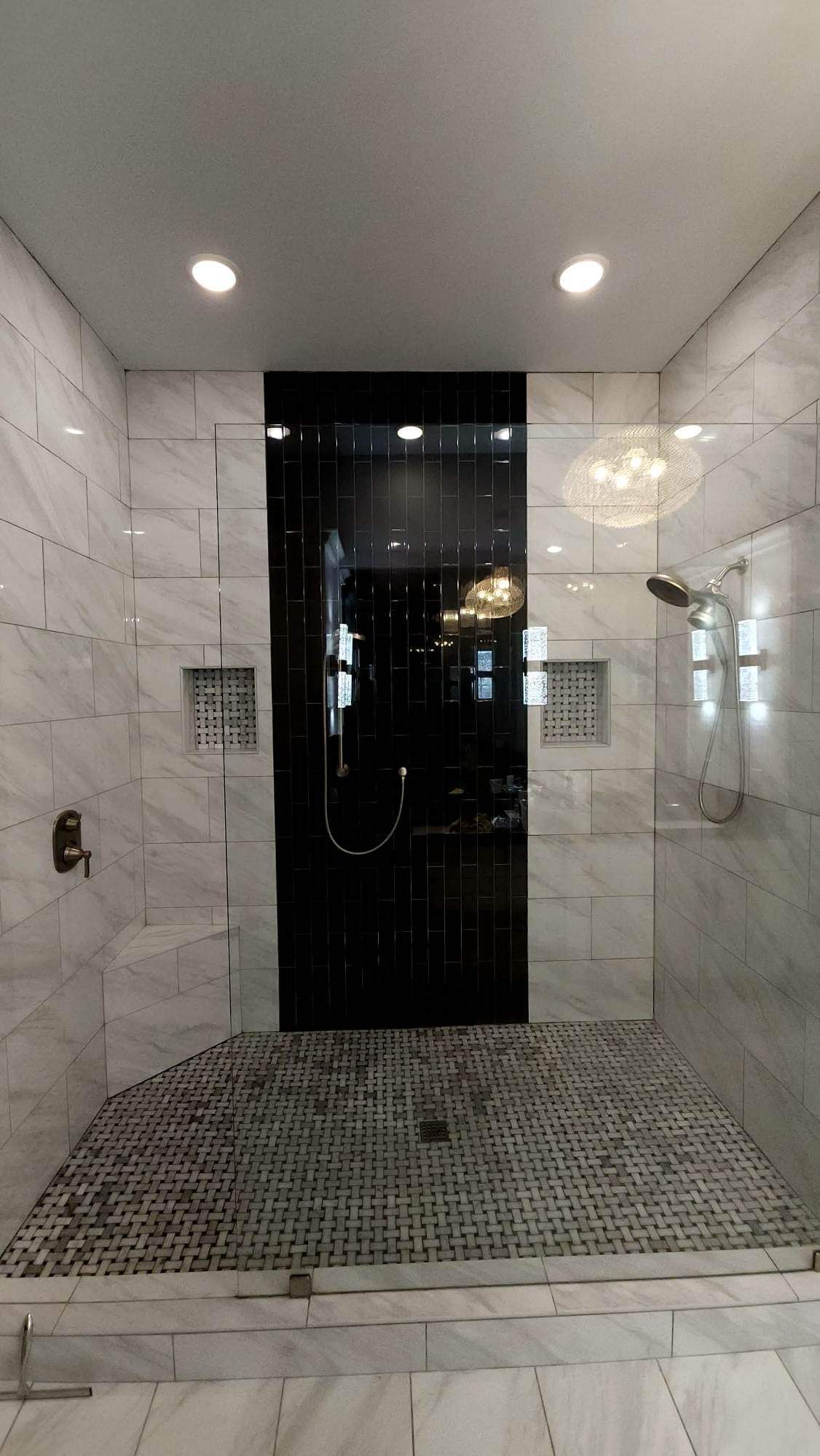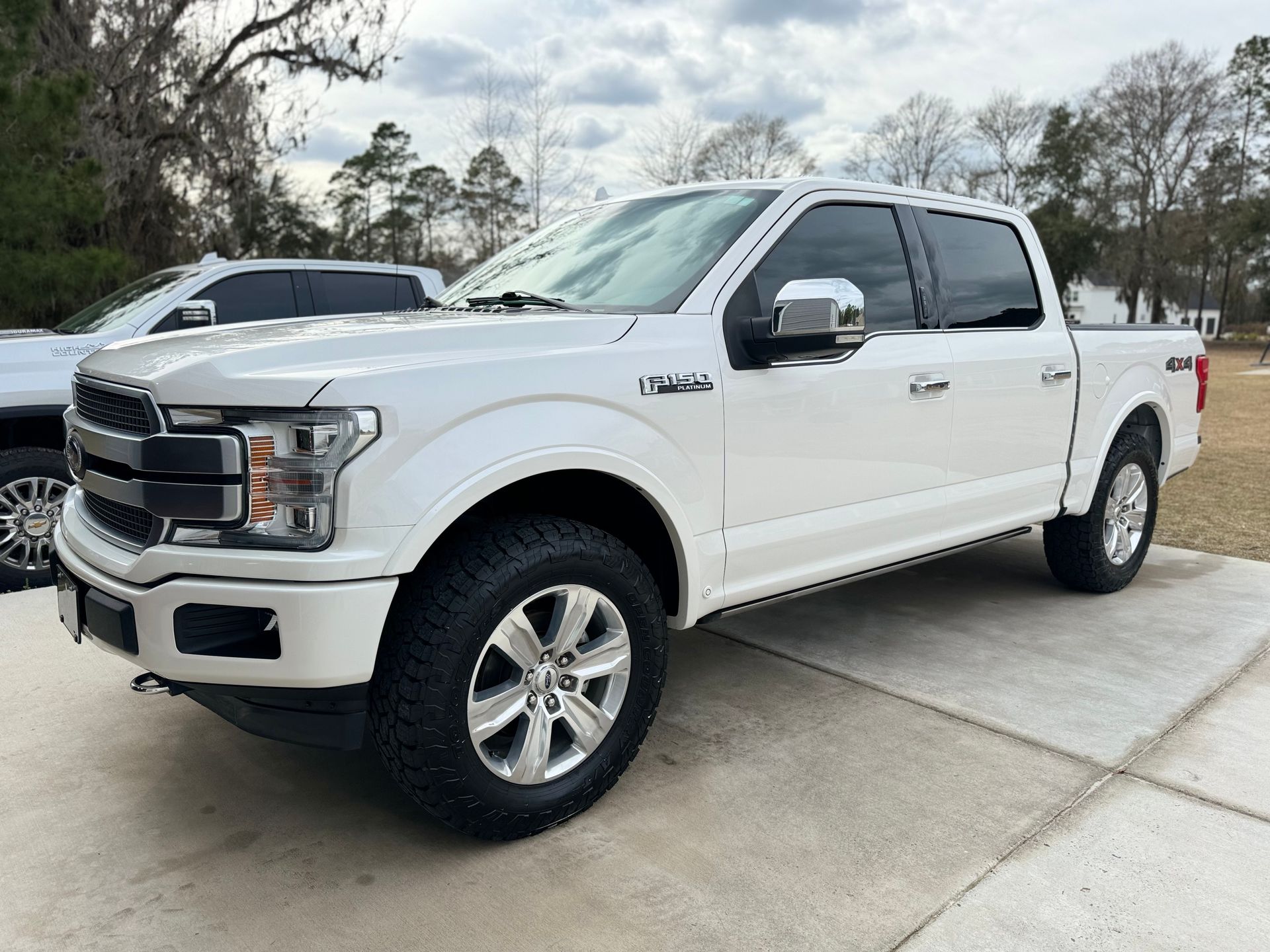Window Tinting Types and Shades for Cars: Benefits, Installation, and Tips
GET A FREE ESTIMATECALL (912) 656-6947
Car window tinting offers a range of functional and aesthetic benefits. There are many different types, each with its own Visible Light Transmission (VLT) percentage, which influences privacy levels, UV protection, and heat reduction inside your vehicle. Yet the perks of selected shades may surprise you; light tints boast visibility, while dark ones provide an unmatched sense of privacy. Don't forget, these shade choices must suit not just your style or comfort preferences but also follow local regulations; unexpected trouble could arise from unclear front side windows.
Car window tinting comes in a variety of shades and types, including dyed, metalized, hybrid, carbon, and ceramic. Each type offers distinct benefits such as UV protection, heat reduction, glare reduction, privacy, security, and style. When considering window tinting for your car, it's important to choose a type and shade that comply with local regulations and meet your specific needs for performance and aesthetics.
Window Tinting Types
Each type of window tinting plays a vital role in shielding your vehicle from heat and sunlight. Yet, they differ significantly in their composition and performance. Metalized window tinting provides effective heat rejection and added strength to windows, while ceramic window tinting blocks over 99% of UV rays without interfering with electronic signals. Infrared (IR) window tinting offers advanced heat rejection properties, keeping the vehicle interior cooler and reducing glare. Each type has unique advantages, so it's essential to consider your specific needs when choosing the right one for your vehicle.
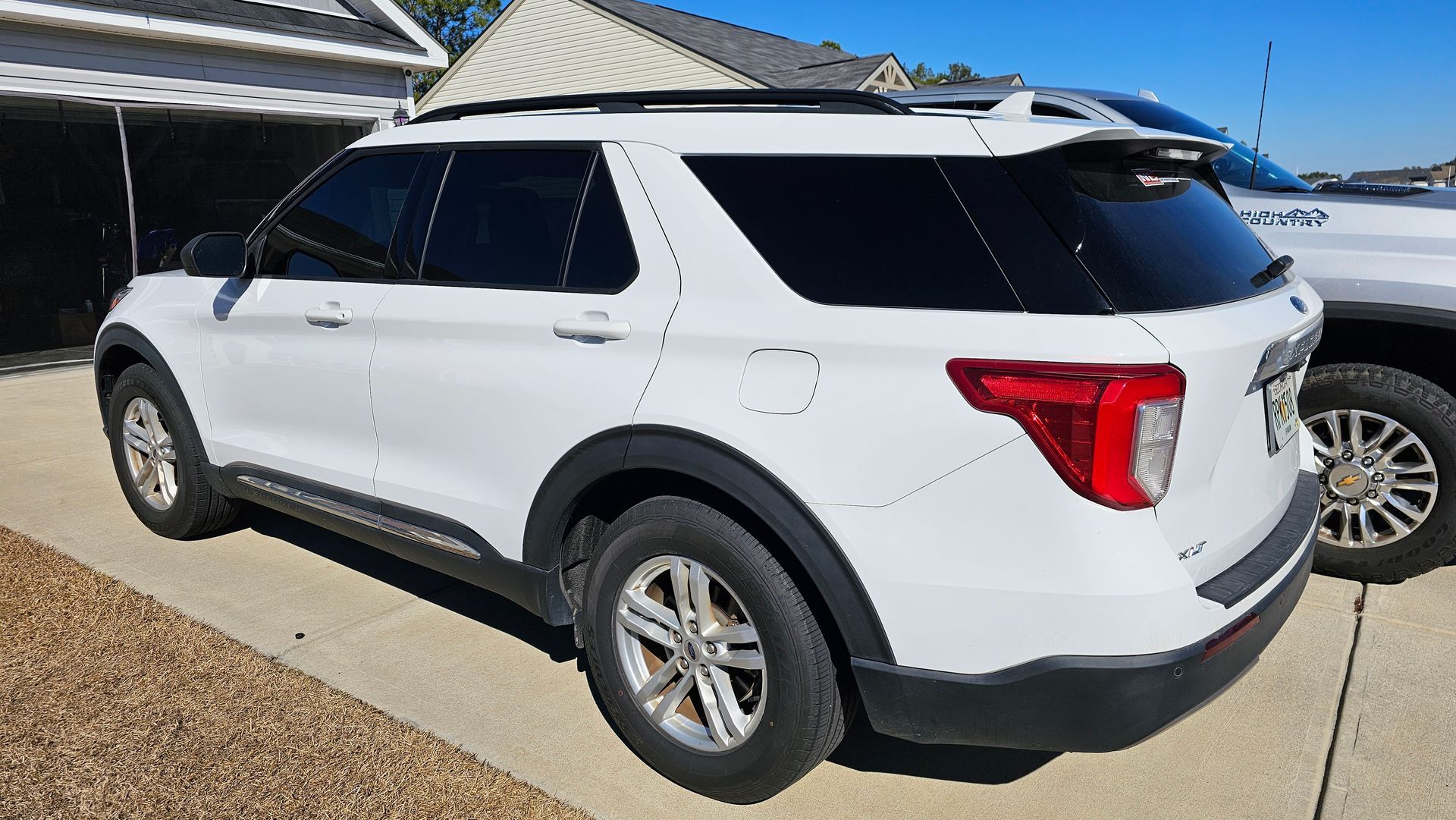
Metal Window Tinting
Metal window tinting is crafted to redirect sunlight away from your vehicle, aiding in regulating interior temperature by minimizing heat. It consists of tiny metallic particles that adeptly reflect UV rays, providing a cooler and more comfortable driving experience, especially on sunny days.
Metal window tinting (also known as metallic window tinting) uses metallic layers in its film for enhanced heat rejection and glare reduction. Metalized layers consist of micrometals that reflect heat and light away from the vehicle interior, helping it remain cooler and more comfortable for passengers. Metal window tinting offers excellent UV protection for the vehicle's interior upholstery and dashboard, helping to prevent fading and damage to either. Furthermore, metallic particles give this tint an eye-catching mirrored appearance, which adds aesthetic appeal.
Metal window tinting may interfere with electronic signals such as GPS, cell phone, and radio reception; as a result, it may not be appropriate for all vehicles. Overall, though, metal window tinting remains a popular choice for those seeking superior heat rejection, glare reduction, and UV protection while maintaining a stylish appearance.
Ceramic Window Tinting
Imagine having a window tint that beautifully enhances your vehicle's aesthetics, all while providing exceptional protection against heat and harmful UV rays. Well, that's exactly what ceramic window tinting offers. Unlike metal-based tints, ceramic window film utilizes advanced technology to block out sun rays without impeding the function of the electronic devices inside your vehicle.
One of the key standout features of ceramic window tinting is its ability to reject heat. The nano-ceramic particles embedded in the film work to attenuate infrared radiation—the main component responsible for heat transmission. This means that even on scorching summer days, your vehicle's interior stays pleasantly cool, offering an invaluable reprieve from the sweltering heat outside.
Beyond thermal management, ceramic tints specialize in safeguarding you and your passengers from harmful ultraviolet (UV) rays. The advanced formulation ensures that more than 99% of harmful UV rays are blocked from entering the vehicle’s interior. Doing so helps shield against skin damage and premature aging caused by prolonged exposure to sunlight. Additionally, it prevents interior fabric and upholstery from fading due to UV radiation.
Infrared Window Tinting
When it comes to blocking heat from sunlight, infrared window tinting leads the pack in innovative technology. This type of window film is designed to intercept infrared rays, preventing them from penetrating through the windows and raising the interior temperature of your vehicle. By doing so, it effectively reduces heat build-up inside the car, creating a more comfortable drive under the sun.
What sets this technology apart is its ability to achieve superior heat rejection without relying on metallic components. Unlike traditional metallized films that use metal particles to deflect heat, infrared window tinting accomplishes the same objective using advanced nano-ceramic particles. The absence of metal ensures no interference with electronic signals in your vehicle—no disruptions to your mobile phone, GPS navigation systems, or any other wireless devices inside the car.
Moreover, one of the outstanding advantages of infrared window tinting is its contribution to UV protection. These films are engineered to block harmful ultraviolet (UV) rays, safeguarding both you and your vehicle's interior from sun-induced damage. The reduction of UV exposure also plays a role in preserving the colors and integrity of your car's upholstery, dashboard, and other interior components.
In addition to providing comfort and protection, IR window films can also enhance energy efficiency. By curbing the amount of heat entering the vehicle, these tints reduce the demand for excessive air conditioning use during hot weather. This contributes to a more eco-friendly driving experience and potentially leads to fuel savings by decreasing the strain on the car's cooling system.
Understanding Various Tint Shades and Their Classifications
When it comes to selecting the right window tint for your car, one size definitely does not fit all. The various tint shades not only determine the look of your vehicle but also affect privacy, UV protection, and heat reduction within your car. Each shade is classified based on its Visible Light Transmission (VLT) percentage, indicating how much light it allows to pass through.
Light Tint Shades (50-70% VLT)
Ensuring significant natural light enters your vehicle's cabin, light tint shades offer a sophisticated appearance while providing some level of privacy and UV protection. They can also help reduce glare from sunlight without significantly impacting visibility, making them ideal for those who prefer a more subtle tint or live in areas with strict regulations against dark tints.
Medium Tint Shades (35-50% VLT)
Medium tint shades strike a balance between style, visibility, and solar protection. With moderate VLT percentages, they provide more privacy compared to lighter tints while still maintaining good visibility during the day and night. These tints effectively block a substantial amount of harmful UV rays and reduce heat buildup inside the vehicle.
Dark Tint Shades (5-20% VLT)
For those seeking enhanced privacy, interior cooling, and UV protection, dark tint shades are the go-to choice. While these tints offer maximum privacy and heat reduction, they might limit visibility at night or in low-light conditions. It's important to consider local regulations when opting for dark-tint shades, as they may be subject to legal restrictions in certain regions.
Each shade offers different levels of privacy, UV protection, and heat reduction, and the selection should align with the driver's preferences as well as local regulations.
Understanding the unique attributes of each tint shade empowers car owners to make informed decisions that not only enhance the aesthetics of their vehicle but also cater to their specific needs for privacy, comfort, and safety.
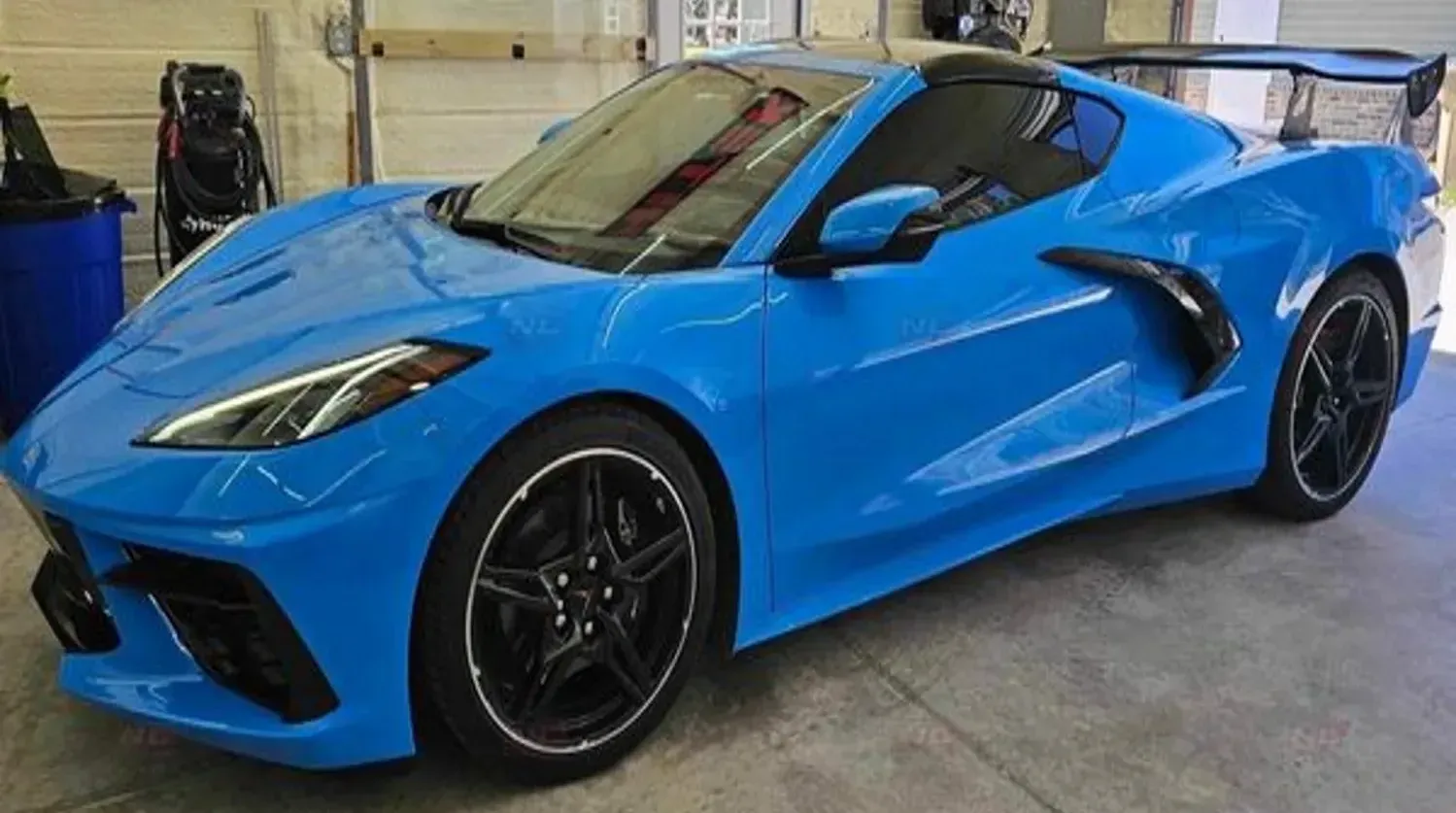
Comprehensive Rules on Window Tinting Regulations
Window tinting isn't just about finding a shade that suits your style; specific rules and regulations, usually measured in terms of VLT - Visible Light Transmission percentage, determine how dark or light your tints can be. This is crucial for maintaining safety on the road and ensuring law enforcement visibility.
The VLT percentage refers to the amount of visible light allowed to pass through the window, so low VLT percentages indicate darker tints. For instance, some regions may prohibit front-side windows from having tints beyond a certain darkness to ensure proper visibility for law enforcement officers during traffic stops. These restrictions are established for valid reasons: they help maintain clear communication between drivers and pedestrians and ensure that officers can easily see inside vehicles during traffic stops for everyone's safety.
To better understand these regulations, reach out to your local Department of Motor Vehicles or the regulatory agencies responsible for vehicle safety in your area. Being aware of these rules is crucial before selecting a tint shade because it saves you from potential fines and having to remove non-compliant tints. Learn more about the legalities of window tinting in Savannah, GA!
Benefits of Knowing Window Tinting Regulations
Knowing these regulations offers more than just compliance; it enables you to make an informed decision about which window tint shades best suit your needs within the legal boundaries. Staying compliant with local regulations also helps in maintaining good visibility while driving during both day and night, contributing directly to road safety. Consider these rules as safeguards to help ensure everyone on the road is driving in a safe manner rather than as restrictions.
Understanding these rules not only keeps you on the right side of the law but also ensures optimal visibility and safety for both law enforcement officials and other road users.
Navigating Tint Percentage Selection
Understanding what VLT (visible light transmission) percentages signify is crucial when selecting the right shade for your car windows. The lower the VLT percentage, the darker the tint. While a 5% VLT allows only 5% of light to transmit through, resulting in a very dark tint, a 50% VLT permits 50% of light to pass through, leading to a much lighter shade. This isn't just about aesthetics—it's about finding the balance between privacy, safety, and legal compliance.
When deciding on the tint percentage for your car, consider the following factors:
- Aesthetics: If you're looking for that sleek, mysterious look for your car, you might be inclined towards a lower VLT percentage. It can give your vehicle a stylish appearance while also reducing glare. However, remember that extremely dark tints may obstruct visibility, especially at night or in low-light conditions.
- Legal Compliance: Each state has its own regulations regarding window tinting. These regulations often dictate maximum allowable VLT percentages for different windows of the car. As a responsible vehicle owner, it's important to check and adhere to these guidelines to avoid potential legal issues.
- Privacy and Safety: Tinted windows not only provide privacy by limiting visibility into your car but also offer added protection by preventing shattering if the glass breaks during an accident or break-in attempt.
In addition to these considerations, it's essential to select a tint that meets your personal needs without compromising safety on the road. Understanding these critical points will help you make an informed decision about which tint percentage is best suited for your car.
Recognizing these crucial factors can assist in making an informed choice when deciding on the perfect window tint for your vehicle—a step towards enhancing both its style and functionality.
Guide on Choosing the Right Window Film
Selecting the right window film for your vehicle is more than just picking out a shade to reduce glare. It involves considering various factors that can significantly impact your driving experience and the longevity of your vehicle. Here are some essential factors to consider when choosing the right window film.
Tailor to Vehicle Type and Usage
Not all vehicles are created equal, and their usage varies as well. The type of window film that best suits a sports car will be different from what's ideal for an SUV or pickup truck. Consider how you use your vehicle and its specific characteristics. For instance, if you have a vehicle primarily used for commuting in hot climates, you might want a film that offers exceptional heat rejection and UV protection.
Additionally, take into account any particular needs driven by your region's climate conditions. If you reside in an area with intense sunlight, it becomes even more crucial to select a window film with superior UV protection to safeguard both yourself and your vehicle's interior from sun damage.
Weigh Long-Term Benefits
Comparing the long-term benefits of different window films is crucial in making an informed decision aligned with your vehicle's longevity and protection needs. Evaluate the overall UV protection, durability, and performance across various lighting conditions.
Keep in mind that while dark tints may provide better heat reduction, they can also impair visibility during nighttime driving. Striking the right balance between solar performance and visibility is essential for a safe driving experience.
By carefully evaluating these factors, you can make an informed decision regarding the most suitable window film for your vehicle, ensuring enhanced comfort, improved aesthetics, and prolonged vehicle longevity.
Final Words
Understanding the various shades and types of window tinting for cars is crucial in order to make informed decisions regarding its protection. At
Northern Lights Home & Auto Coatings, our focus lies on providing privacy, UV protection, and aesthetic enhancements, as well as expert advice and professional installation - so
contact us now if you want to upgrade your window tint! Drive with style with our premium window tint solutions!

